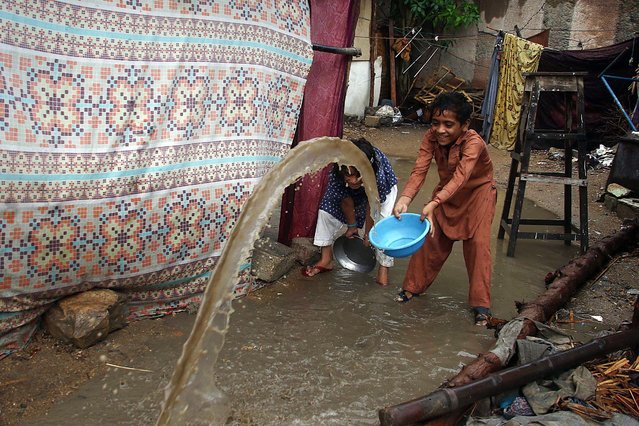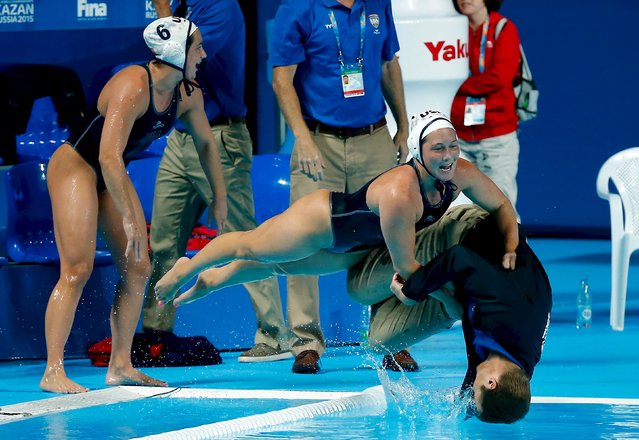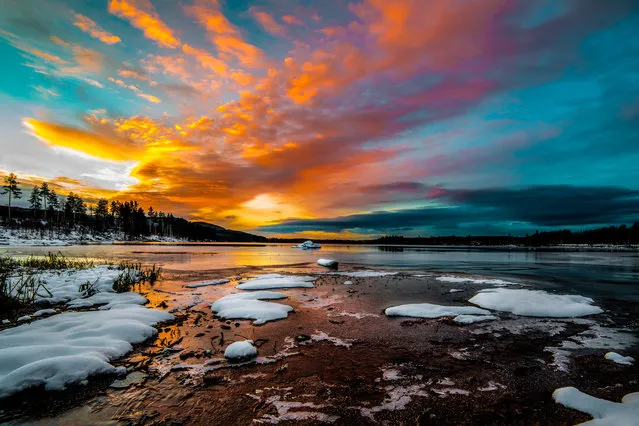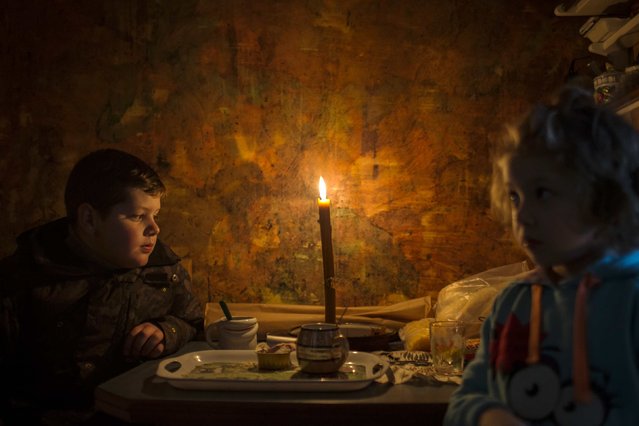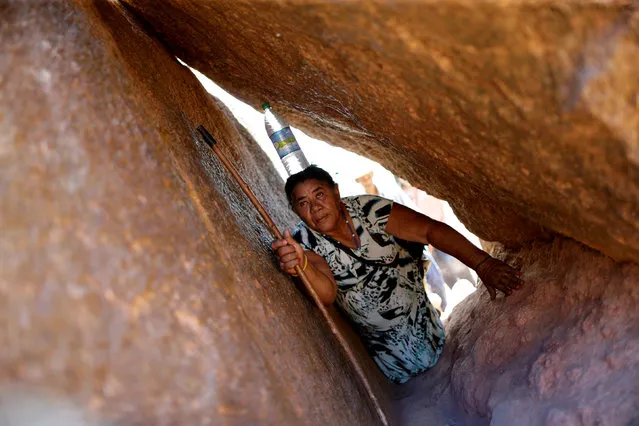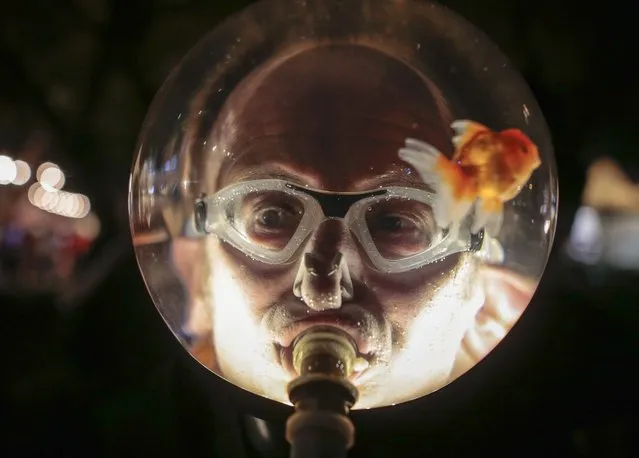
A man wearing a water-filled helmet in which a goldfish swims performs an act titled “Aquaman” during the Night Festival 2016 in Singapore, 20 August 2016. The ninth edition of the festival will run from 19 to 27 August and features installations and performances by a range of international and local artists. (Photo by Wallace Woon/EPA)
21 Aug 2016 11:22:00,post received
0 comments

